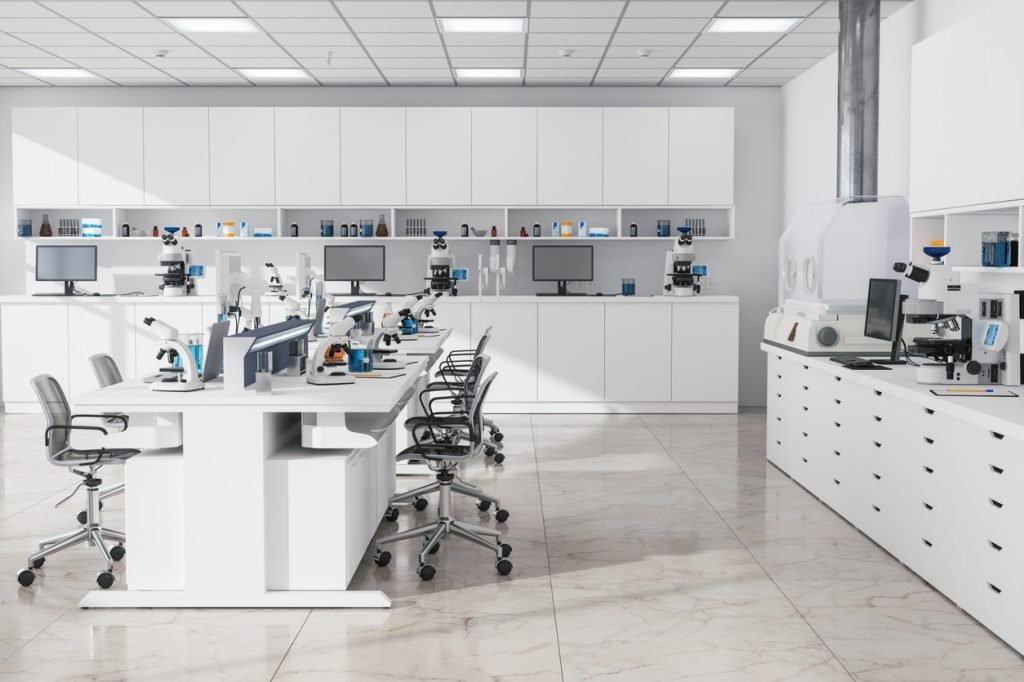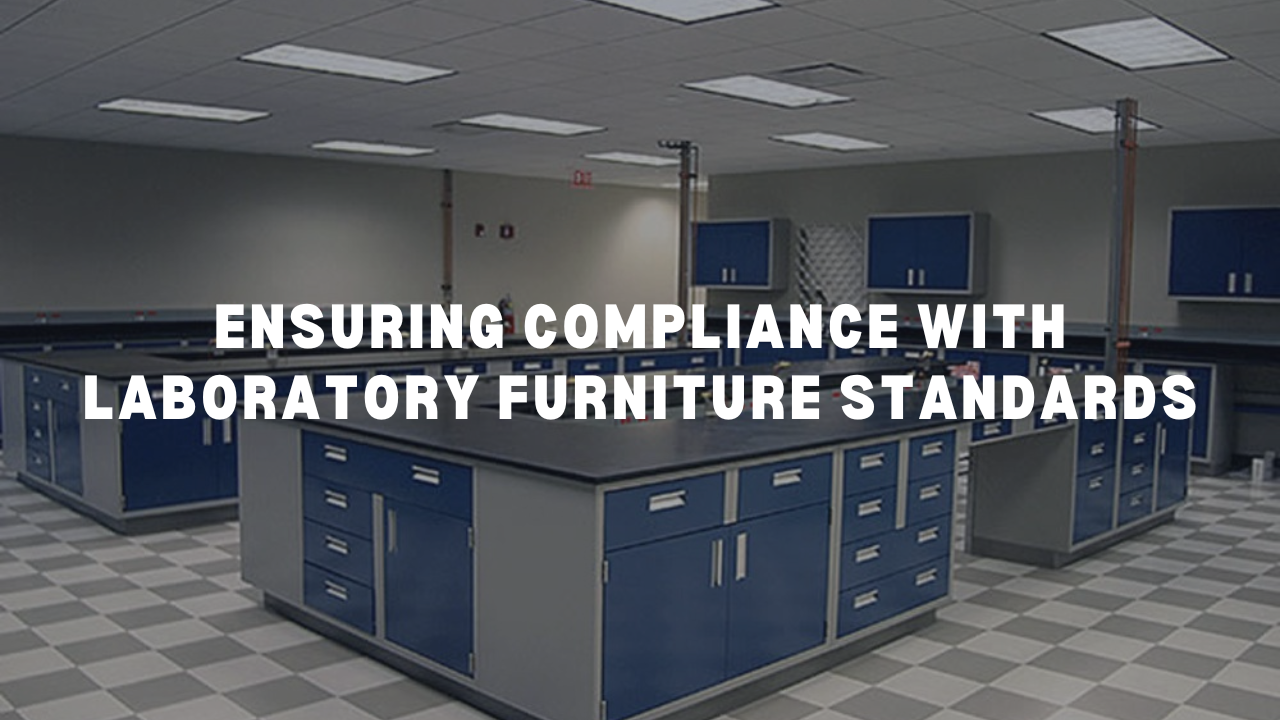Laboratories are essential hubs for scientific research, experimentation, and analysis across various industries, including pharmaceuticals, healthcare, biotechnology, and academia. Within these environments, laboratory furniture plays a crucial role in facilitating efficient workflows, ensuring safety, and maintaining compliance with industry regulations and standards.
This comprehensive guide explores the importance of complying with laboratory furniture standards, the key regulations governing laboratory furniture, and best practices for ensuring compliance.
Why Compliance with Laboratory Furniture Standards Matters

Compliance with laboratory furniture standards is critical for several reasons:
Safety: Laboratory furniture that meets industry standards helps minimize risks associated with chemical spills, fires, and other hazards. Properly designed and constructed furniture reduces the likelihood of accidents and injuries, ensuring a safe working environment for laboratory personnel.
- Quality Assurance: Adhering to established standards ensures the quality and reliability of laboratory furniture. Compliance guarantees that furniture components are durable, resistant to corrosion, and capable of withstanding the rigors of laboratory operations.
- Regulatory Requirements: Many regulatory bodies, such as the Occupational Safety and Health Administration (OSHA) in the United States and the Health and Safety Executive (HSE) in the United Kingdom, mandate compliance with specific standards to ensure workplace safety and regulatory compliance.
- Risk Mitigation: Non-compliance with laboratory furniture standards can result in fines, legal liabilities, and reputational damage for organizations. By adhering to standards, organizations mitigate the risk of penalties and demonstrate their commitment to safety and quality.
Key Regulations and Standards

Several regulations and standards govern the design, manufacture, and installation of laboratory furniture. Some of the most prominent ones include:
- ANSI/BIFMA X5.1: Developed by the American National Standards Institute (ANSI) and the Business and Institutional Furniture Manufacturers Association (BIFMA), this standard sets performance and safety requirements for office furniture, including laboratory chairs and workstations.
- SEFA 8: Published by the Scientific Equipment and Furniture Association (SEFA), SEFA 8 provides guidelines for the design, construction, and installation of laboratory furniture, including benches, casework, and fume hoods.
- OSHA Regulations: OSHA regulations, such as 29 CFR 1910.1450 (Occupational Exposure to Hazardous Chemicals in Laboratories), outline safety requirements for laboratory operations, including the use of appropriate furniture and equipment to mitigate chemical hazards.
- ISO 14644: This international standard specifies requirements for cleanrooms and controlled environments, including the design and installation of furniture to minimize contamination risks in laboratory settings.
Best Practices for Ensuring Compliance
To ensure compliance with laboratory furniture standards, organizations should follow these best practices:
- Select Certified Products: Choose laboratory furniture that complies with recognized standards and certifications, such as ANSI/BIFMA certification or SEFA compliance. Certified products have undergone rigorous testing to verify their safety, durability, and performance.
- Engage Experienced Suppliers: Work with reputable suppliers and manufacturers with a proven track record in designing and supplying laboratory furniture. Experienced suppliers understand regulatory requirements and can provide guidance on selecting suitable furniture solutions.
- Conduct Regular Inspections: Implement a regular inspection and maintenance program to assess the condition of laboratory furniture and identify any defects or safety issues. Inspections should cover structural integrity, ergonomics, and compliance with relevant standards.
- Train Personnel: Provide training to laboratory personnel on the proper use and maintenance of laboratory furniture. Training programs should include instructions on adjusting furniture settings, handling hazardous materials, and reporting safety concerns.
- Document Compliance: Maintain documentation demonstrating compliance with applicable standards and regulations. Keep records of furniture specifications, installation dates, maintenance activities, and any modifications made to ensure traceability and accountability.
Is it necessary to comply with laboratory furniture standards if my laboratory is small-scale?
Yes, regardless of the size of the laboratory, compliance with furniture standards is essential for ensuring safety and regulatory compliance. Even small-scale laboratories handle hazardous materials and require furniture that meets performance and safety requirements.
How often should laboratory furniture be inspected?
Laboratory furniture should be inspected regularly, ideally at least once every six months. However, the frequency of inspections may vary based on factors such as the type of furniture, usage intensity, and regulatory requirements.
Can I retrofit existing laboratory furniture to comply with standards?
In some cases, existing laboratory furniture can be retrofitted or upgraded to meet relevant standards. However, it’s essential to consult with experienced professionals to assess the feasibility and cost-effectiveness of retrofitting solutions.
Are there specific standards for laboratory ergonomic furniture?
While there are no specific standards dedicated solely to laboratory ergonomic furniture, general ergonomic principles outlined in standards such as ANSI/BIFMA X5.1 apply to laboratory furniture design. Additionally, organizations can reference ergonomic guidelines and best practices for designing ergonomic laboratory workstations and seating.
Conclusion
Compliance with laboratory furniture standards is paramount for maintaining safety, quality, and regulatory compliance in laboratory environments. By adhering to established standards, organizations ensure the integrity of laboratory operations, mitigate risks, and uphold the well-being of laboratory personnel. Through careful selection, inspection, and documentation of laboratory furniture, organizations can create a safe and productive laboratory environment that meets the highest standards of excellence.







